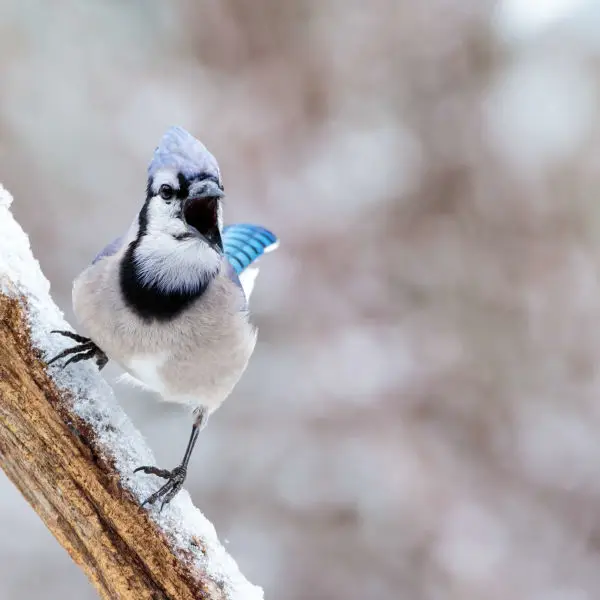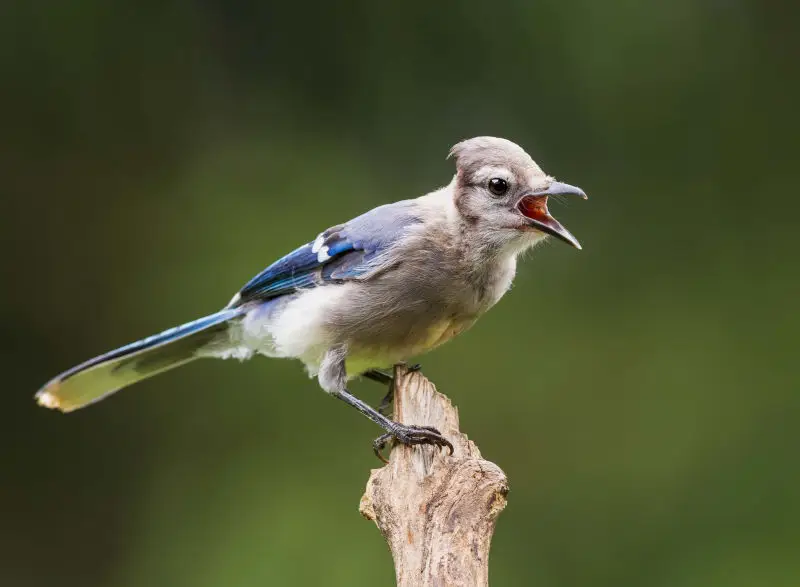Do Male Blue Jays Have More Blue Necks



Blue Jay
Population size
13-22 mln
Blue jays are small colorful birds native to North America. They are predominantly blue in color with a white chest and underparts, and a blue crest; they have a black, U-shaped collar around the neck and a black border behind the crest. Males and females are similar in plumage that does not vary throughout the year.
Photos with Blue Jay





View 25 more photos of Blue Jay
Distribution
Geography
Blue jays occur from southern Canada and throughout the eastern and central United States south to Florida and northeastern Texas. They reside through most of the eastern and central United States, although western populations may migrate south. Blue jays live in a variety of habitats within their large range, from the pine woods of Florida to the spruce-fir forests of northern Ontario. They prefer mixed woodlands with oaks and beeches. These birds have also adapted to human activity and can often be seen in parks and residential areas.

Biome
Climate zones

Habits and Lifestyle
Blue jays are noisy, bold, and aggressive birds. They are very territorial and will chase others from a feeder for an easier meal. Additionally, Blue jays may raid other birds' nests, stealing eggs and chicks. When they are alarmed or angry, the blue crest atop their head will rise and it will lower when the birds are relaxed or calm. Blue jays have strong black bills which they use for cracking nuts, usually while holding them with their feet, and for eating corn, grains and seeds. They feed both on the ground and in trees and will sometimes cache food to eat later. Much about the migratory behavior of Blue jays remains a mystery. Some are present throughout winter in all parts of their range while the northernmost populations are migratory. Blue jays usually migrate during the day, in loose flocks of 5 to 250 birds. Young birds may be more likely to migrate than adults, but many adults also migrate. Some individuals migrate south one year, stay north the next winter, and then migrate south again next year. Blue jays can make a large variety of sounds, and individuals may vary in their calling style. Their most commonly recognized sound is the alarm call, which is a loud, almost gull-like scream. There is also a high-pitched 'jayer-jayer' call that increases in speed as the bird becomes more agitated. Blue jays will use these calls to band together to mob potential predators such as hawks and drive them away from the jays' nests.
Diet and Nutrition
Blue jays are omnivores and feed on both plants and animals. Their diet includes acorns, nuts, weed seeds, grain, fruits, and other berries, bread, meat, small invertebrates of many types, scraps in town parks, bird-table food, and rarely eggs and nestlings.
Mating Habits
Blue jays form monogamous pair bonds for life. The breeding season begins in mid-March, peaks in mid-April to May, and extends into July. Blue jays are not very picky about nesting locations. If no suitable tree or large bush, they will even use places like the large mailboxes or occupy nests of other mid-sized songbirds as long as these are placed in suitable spots. The nest is usually built at a height in the trees of 3-10 m (9.8-32.8 ft). It is cup-shaped and composed of twigs, small roots, bark strips, moss, other plant material, cloth, paper, and feathers, with occasional mud added to the cup. Both sexes build the nest and rear the young, though only the female broods them. The male feeds the female while she is brooding the eggs. There are usually between 3 and 6 eggs laid and incubated over 16-18 days. The chicks are altricial; they are hatched naked, helpless, and with their eyes closed. The young usually fledge between 17-21 days after hatching and may remain with their parents for one to two months. They become reproductively mature after one year of age.

Population
Population threats
There are no major threats to Blue jays at present.
Population number
According to the What Bird resource, the total population size of the Blue jay is 22,000,000 birds. According to tot the All About Birds resource the total breeding population size of the species is around 13 million individuals. Overall, currently, Blue jays are classified as Least Concern (LC) on the IUCN Red List and their numbers today are stable.
Ecological niche
Blue jays often hide seeds and nuts for later; they burrow them into the soil and sometimes forget about them thus helping to disperse seeds throughout their ecosystem.
Fun Facts for Kids
- The name "jay" derives from the noisy, garrulous nature of these little birds and has been applied to other birds of the same family, which are also mostly gregarious. Blue jays are sometimes called "jaybirds".
- The Blue jay's coloration does not come from pigments but is the result of the internal structure of the feathers; if a blue feather is crushed, the blue disappears because the structure is destroyed. This is referred to as structural coloration.
- Blue jays are highly curious and intelligent birds. Young birds often playfully snatch brightly colored or reflective objects, such as bottle caps or pieces of aluminum foil, and carry them around until they lose interest. In captivity, Blue jays have been observed using strips of newspaper as tools to obtain food, while captive fledglings have been observed attempting to open the doors of their cages.
- Blue jays may learn to mimic human speech. They can also copy the cries of local hawks so well that it is sometimes difficult to tell which it is.
- Blue jays also have quiet, almost subliminal calls which they use among themselves in proximity. One of the most distinctive calls of this type is often referred to as the "rusty pump" as it resembles the sound of an old hand-operated water pump.
- Blue jays differ from most other songbirds for using their call as a song.
- In the old African American folklore of the southern United States, the Blue jay was a significant metaphysical creature. In some tales, this bird was credited with making the earth "when all de worl' was water" by bringing the first "grit" or "dirt".
References
More Fascinating Animals to Learn About
Source: https://animalia.bio/blue-jay
0 Response to "Do Male Blue Jays Have More Blue Necks"
Post a Comment